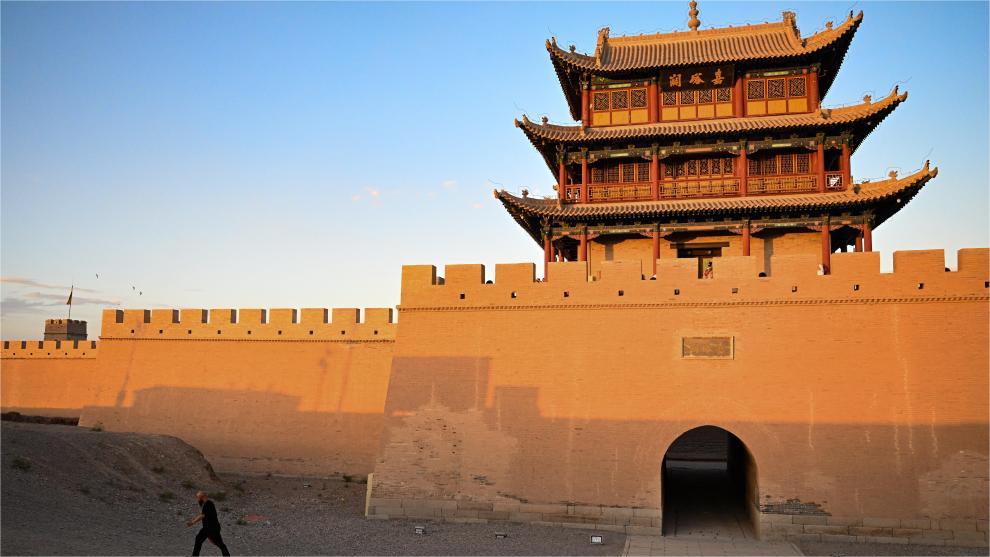Explainer: Close bonds underlying robust China-Vietnam cooperation
HANOI, Dec. 11 (Xinhua) -- As contiguous neighbors, China and Vietnam share notable cultural and social affinities. Over the past 73 years since they established diplomatic ties, the two sides have seen their mutually beneficial cooperation ever deepening.
HIGH-LEVEL GUIDANCE
Throughout the years, leaders of both parties and countries have consistently maintained close communication, reaching numerous crucial agreements to guide the cooperative development of bilateral ties.
In 1999, top leaders of the two parties and the two countries identified the guideline to promote the bilateral ties in the 21st century as "long-term stability, future orientation, good-neighborly friendship and comprehensive cooperation."
Later, the two sides reached consensus that the two countries and their people should be "good neighbors, good friends, good comrades and good partners."
Leaders of both sides have also established solid political mutual trust and a profound comradeship to chart the course for future bilateral cooperation and provide important strategic guidance.
In October, Chinese President Xi Jinping met with Vietnamese President Vo Van Thuong, who was in Beijing for the third Belt and Road Forum for International Cooperation.
Exactly a year earlier, General Secretary of the Communist Party of Vietnam Central Committee Nguyen Phu Trong became the first foreign leader to visit China after the 20th CPC National Congress and was awarded the Friendship Medal of the People's Republic of China by Xi.
Reciprocal visits of both leaders took place in 2017, with Xi's state visit to Vietnam being his first overseas trip after the 19th CPC National Congress.
It was during Xi's 2017 state visit to Vietnam when a memorandum of understanding was signed on the joint implementation of the China-proposed Belt and Road Initiative and Vietnam's "Two Corridors and One Economic Circle" plan, resulting in major projects that substantially improved the wellbeing of the people.
LIKE-MINDED BROTHERS
China and Vietnam, with the same political system, have enjoyed smooth diplomatic interactions and a favorable environment for policy cooperation, which has seen their remarkable joint actions aimed at tackling regional difficulties and promoting stability.
Both advocating multilateralism, they have actively engaged in international cooperation and organizations.
Their collaborative efforts extend beyond bilateral relations, exerting influence on regional dynamics. In particular, both countries play active roles within the Association of Southeast Asian Nations (ASEAN) cooperative framework, contributing to the organization's efforts to foster economic integration and regional security.
The commitment to opening up and embracing global markets is another pivotal aspect of China-Vietnam cooperation.
As staunch supporters of free trade, China and Vietnam have championed regional trade agreements. For instance, both nations are signatories to the Regional Comprehensive Economic Partnership, underscoring their dedication to an open, rules-based trading system.
ECONOMIC COMPLEMENTARITY
The complementary nature of the Chinese and Vietnamese economies provides a firm basis for their cooperation. As a result, both sides see the other's development as an opportunity for their own development.
Vietnam's fast-growing manufacturing industry benefits from China's robust industrial capabilities. A significant increase in Chinese investment in Vietnam has played a critical role in fostering Vietnam's industrial development and helping the country create job opportunities.
Official data show that Chinese investment in Vietnam has been on the rise, ranking second in the first nine months of this year. Personnel exchanges also bounced back and are expected to grow as more flights resume.
In recent years, bilateral economic cooperation has flourished, exemplified by burgeoning trade volumes.
China is Vietnam's largest trading partner, the largest import market, and the second largest export market. Meanwhile, Vietnam is China's largest trading partner within ASEAN, with annual bilateral trade exceeding 200 billion U.S. dollars in 2021 and 2022. In the first 10 months of this year, bilateral trade reached 185.1 billion dollars.
China-Vietnam border trade is also remarkable.
The border shared by China and Vietnam creates ample opportunities for trade and economic cooperation. Geographical proximity has led to the establishment of numerous border trade points, facilitating the flow of goods and fostering bilateral economic exchanges.
One of the major highlights of bilateral trade in recent years has been the thriving cross-border fruit trade.
Vietnam's fruit exports to China have expanded significantly year after year, thanks to fast transportation, cold chain logistics, and the development of e-commerce. The China-Vietnam border city Chongzuo has become China's largest city for import and export of border fruits trade.
In essence, China-Vietnam cooperation has demonstrated the effectiveness of collaboration between nations with similar ideals and similar development paths. Both countries' commitment to deepening cooperation remains a foundation for regional peace and shared prosperity as they continue to navigate the complexities of a rapidly changing global landscape.
Photos
Related Stories
- Xi's visit to chart course for development of China-Vietnam ties, boost shared growth in Asia-Pacific
- Full text of Xi's article on Vietnamese newspaper
- Xi says China, Vietnam on promising path of building community with shared future for mankind
- Robust durian imports boost China-Vietnam trade
- Enormous potential in economic and trade cooperation between China and Vietnam
Copyright © 2023 People's Daily Online. All Rights Reserved.









